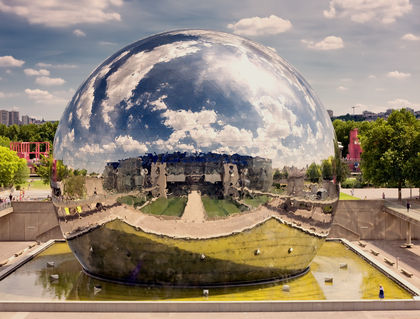France is a leading exporter of nuclear technology and has developed the first commercial vitrification plant for the disposal of radioactive wastes by integrating them in special glass and then encasing the glass in stainless steel containers for burial. In 1965, France was the third nation, after the former USSR and the United States, to launch its own space satellite. The French no longer launch their own satellites, however, preferring instead to contribute to the European Space Agency.
The Acádémie des Sciences, founded by Louis XIV in 1666, consists of eight sections: mathematics, physics, mechanics, astronomy, chemistry, cellular and molecular biology, animal and plant biology, and human biology and medical sciences. The Centre National de la Recherche Scientifique (CNRS), founded in 1939, controls more than 1,370 laboratories and research centers. In 1996, the CNRS employed 19,391 researchers and engineers and 7,263 technicians and administrative staff. In addition, there are well over 100 other scientific and technological academies, learned societies, and research institutes. In 1995, France's total research and development expenditures amounted to 190 billion francs, or 25% of GDP. In 1987–97, research and development expenditures equaled 2.3% of GNP. In 1998, high-tech exports were valued at $54.2 billion and accounted for 23% of manufactured exports. Research and development personnel in 1987–97 numbered 2,659 scientists and engineers and 2,873 technicians per million people.
France has a large number of universities and colleges that offer courses in basic and applied sciences. The Palais de la Découverte in Paris (founded in 1937) is a scientific center for the popularization of science. It has departments of mathematics, astronomy, physics, chemistry, biology, medicine, and earth sciences, and includes a planetarium and cinema. A similar Parisian facility is the Cité des Sciences et de l'Industrie (founded in 1986). The city also has the Musée National des Techniques (founded in 1794) and the Musée de l'Air et de l'Espace (founded in 1919). In 1987–97, science and engineering students accounted for 37% of university enrollment.

0 comments:
Post a Comment